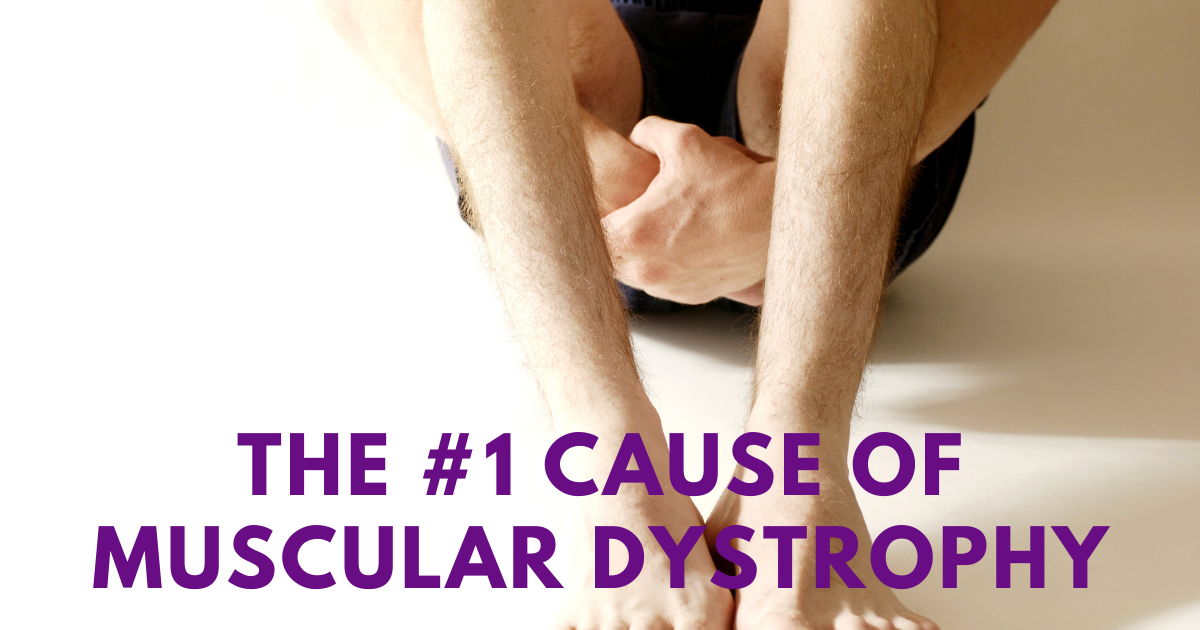The #1 Cause of Muscular Dystrophy and How to Prevent
What is Muscular Dystrophy, the #1 Cause of Muscular Dysfunction?
Muscular Dystrophy is a hereditary condition that affects many body systems including the skeletal muscles. The muscles are the largest organ in our body and it is responsible for movement, posture, and support.
Muscular Dystrophy is a group of genetic disorders that affect how muscles develop, function, and grow. It is the most common cause of muscle weakness in children and adults. Muscular Dystrophy primarily affects children under the age of 15 years old.
Muscles can be affected by Muscular Dystrophy when they don’t produce enough dystrophin protein as they should or when they produce too much dystrophin protein which causes an abnormal build-up in the muscle tissue.
Dystrophin is a protein that allows muscle cells to produce energy. It is a key component of the dystrophin complex that is found in muscles and other types of cells.
Dystrophin is an important protein that helps to maintain the structure of muscle fibers. It is found in the muscles of people with Duchenne muscular dystrophy, a rare genetic disease in which muscles don’t develop normally. The protein has also been studied as a potential treatment for sarcopenia and osteoporosis, two common diseases that cause aging muscle deterioration.
Dystrophin is a protein with a wide range of functions, one of which is the regulation of muscle contraction. The human body produces Dystrophin in the skeletal and cardiac muscles. Dystrophin also helps to trigger muscle repair. The protein can also be found in eggs, milk, fish, and some plants. However, this protein cannot be found in those natural sources in its full form.
5 Interesting Facts About Muscle Dystrophy
Muscular dystrophy is a group of genetic diseases that cause muscle weakness and wasting. It can be caused by a number of factors including aging, injury, diabetes, and congenital abnormalities.
Muscle dystrophy is often thought to be a disease that only affects people with muscles but it actually affects the brain as well. There are several types of muscular dystrophy including Duchenne muscular dystrophy (DMD), Becker muscular dystrophy, Emery-Dreifuss muscular dystrophy, and facioscapulohumeral muscular dystrophy.
-
Duchenne muscular dystrophy (DMD)
Duchenne muscular dystrophy is a genetic disorder that affects boys and young men. The disease is characterized by progressive muscle degeneration, weakness, and loss of function.
-
Becker muscular dystrophy
Becker muscular dystrophy is a myopathic disorder that primarily affects the muscles in the body. The genetic cause of this disease is unknown. Signs and symptoms of Becker muscular dystrophy include muscle weakness and atrophy, growth retardation, deformities in limbs, cardiomyopathy, heart failure, and corneal clouding.
-
Facioscapulohumeral muscular dystrophy
Facioscapulohumeral muscular dystrophy is one of the rarest and most severe forms of muscular dystrophy. This muscle-tissue disorder causes muscle weakness in the arm, shoulder, and neck that results in developmental delay, muscle wasting and many other complications.
-
Emery-Dreifuss muscular dystrophy
This disorder is an inherited condition that causes muscle weakness. Symptoms of this disorder include pain in the shoulders, hips, knees, and elbows. It can cause problems with walking and speaking that may lead to difficulty swallowing.
-
Muscle dysfunctions in the brain
Muscle dysfunctions in the brain can cause a wide range of disorders. Dysfunctions in the sympathetic nervous system, cerebellum, and basal ganglia are common. The symptoms of these dysfunctions may vary depending on what part of the brain is affected, but they can include problems with speech and movement coordination, memory problems, and difficulty walking.
What Are The Risk Factors & Risk Factors For Preventing & Managing the Disease
A muscular dystrophy is a group of progressive muscle diseases that cause a weakening and wasting of skeletal muscles, which eventually leads to death. The most common form of muscular dystrophy is muscular dystrophies.
Muscular dystrophy is an inherited condition that affects the muscles and the nervous system. It can be passed down from one generation to another if the parents are carriers. The risk factors for developing muscular dystrophies are:
– Inheriting a defective gene from both parents- this includes mutations in genes such as DMD, DMD2, and DMD3
– Having a family history of inheriting or carrying the disease (especially if it was diagnosed before birth)
– Being exposed to certain environmental factors such as pesticides or chemicals during pregnancy or infancy
There are many risk factors for developing muscular dystrophy, but it’s important to know the signs of early diagnosis and treatment options.
How To Keep Your Child Safe From Exposed to Potential Risks of Muscular dystrophy
Muscular dystrophy can be prevented by following some simple steps such as exercising regularly and avoiding drugs that can damage the muscles.
The most common warning signs of future cases are:
– A child who has difficulty keeping up with peers in physical activities
– A child who has difficulty walking or running
– A child who has a limp or uneven gait
Early-onset of mental illness is a difficult thing to deal with but there are some things that parents can do in order to prevent it.
One of the most important things that parents can do is to pay attention to their child’s development and signs of potential muscular dystrophy.
Conclusion on How to Avoid Developing Muscle Dysfunctions In Your Child’s Future
As we bring this article to an end, to avoid developing muscle dysfunctions in your child’s future, the first step is to get a proper diagnosis. If you suspect that your child has a muscle dysfunction, then it is important to talk with your pediatrician and try to figure out the cause of the problem.










